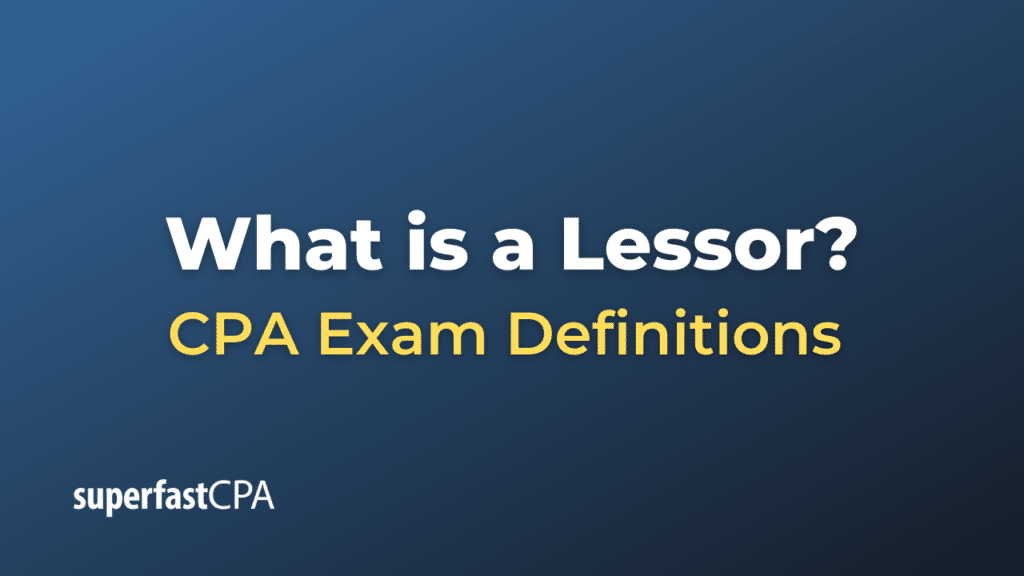Lessor
A lessor is an individual, a business, or a government organization that owns an asset and provides the asset for use to another party (known as the lessee) through a lease agreement. The lease agreement grants the lessee the right to use the asset for a specified period of time in exchange for regular payments.
The lessor continues to own the asset, although the lessee has the right to use it for the duration of the lease. Once the lease agreement ends, the asset is typically returned to the lessor, unless the lease is a lease-to-own agreement, where the lessee has the option to purchase the asset at the end of the lease period.
Examples of lessors include:
- Real Estate Owners: Landlords who lease their property to tenants.
- Equipment Leasing Companies: Companies that lease out various types of equipment (construction, office, medical, etc.) to businesses.
- Car Leasing Companies: These companies lease out cars for a specific period of time. At the end of the lease, the car is returned to the company.
- Government Entities: These may lease public lands for various purposes such as farming, mining, and building infrastructure.
The lessor is responsible for maintaining the leased asset in many cases, though the exact responsibilities will be specified in the lease agreement. For example, a landlord (lessor) might be responsible for major repairs in a residential property, while the tenant (lessee) might be responsible for keeping the property clean and reporting any issues to the landlord.
Example of a Lessor
Let’s consider a simple scenario involving a vehicle lease.
Suppose AutoRide Inc., a car leasing company, owns a fleet of vehicles that it leases to customers. James, a customer, is interested in driving a new model sedan but doesn’t want to purchase the car outright. He approaches AutoRide Inc. to lease the sedan.
After discussing the terms, AutoRide Inc. and James enter into a three-year lease agreement for the sedan. The agreement specifies that James will pay $300 per month for the lease and is responsible for maintenance costs like oil changes and tire rotations. He also agrees to a mileage limit of 12,000 miles per year, with additional charges for exceeding this limit. At the end of the lease, James will return the car to AutoRide Inc.
In this example, AutoRide Inc. is the lessor. They own the vehicle and lease it to James, who is the lessee. Despite James having the right to use the car for the duration of the lease, the ownership of the car remains with AutoRide Inc.
If James drives responsibly, maintains the car well, and adheres to the terms of the lease, AutoRide Inc. will receive a steady stream of income from the lease payments, and at the end of the lease, they can lease the car again or sell it, maintaining the value of their asset. If, however, James breaches the lease agreement (for example, by not making timely payments), AutoRide Inc. has the right to terminate the lease and take back the vehicle.













